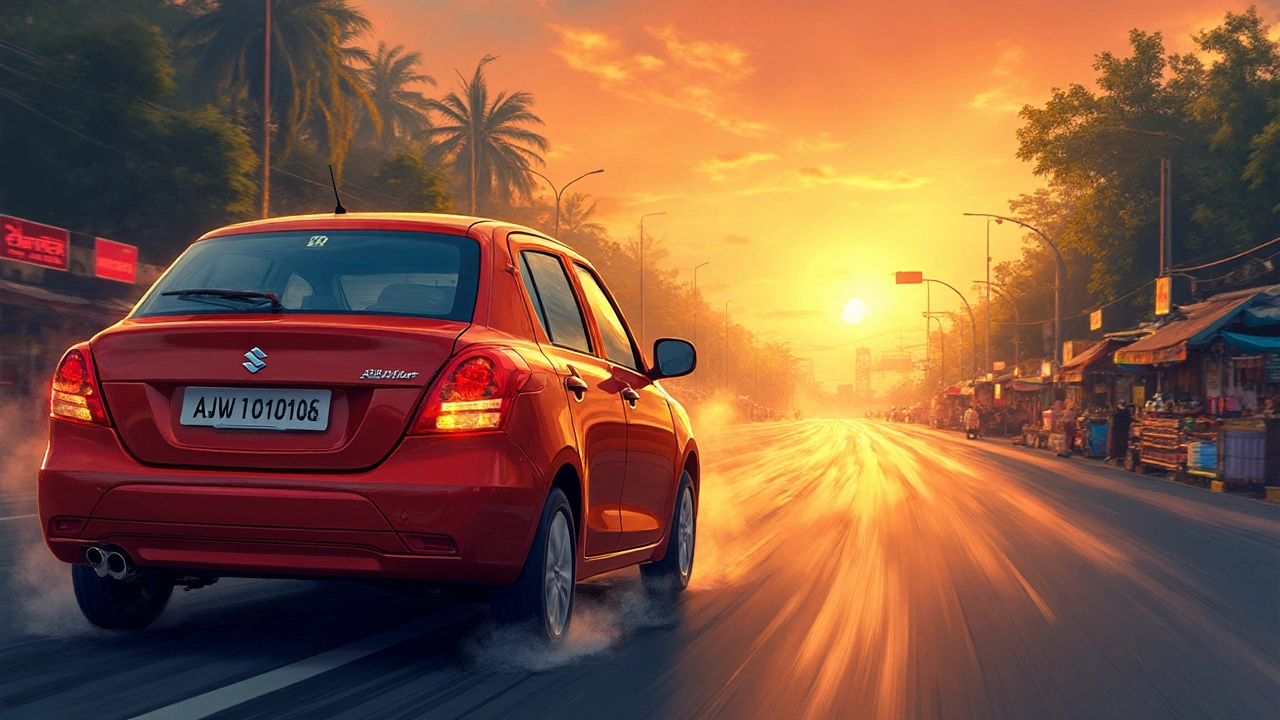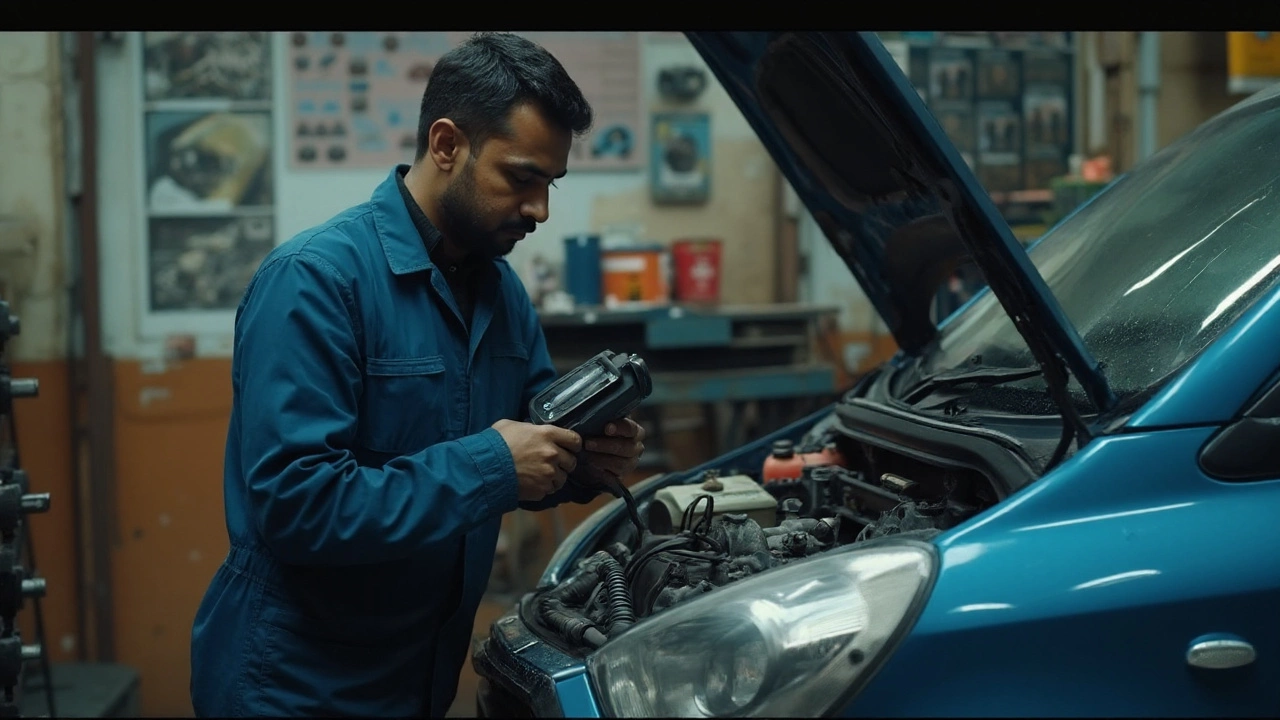 Sep, 24 2025
Sep, 24 2025
Fuel Pump Diagnosis Quiz
1. Which symptom most strongly indicates a failing fuel pump?
2. What is the typical fuel pressure spec for most gasoline engines?
3. Which OBD‑II code usually points to low fuel pressure?
4. Before removing a fuel tank, what is the safest first step?
5. Which habit helps extend fuel pump life?
Fuel Pump is a mechanical/electrical device that moves gasoline or diesel from the tank to the engine at the pressure needed for proper combustion. When it stops doing its job, the entire powertrain feels the impact.
How a Fuel Pump Keeps the Engine Breathing
The fuel pump sits inside (or near) the fuel tank and works with a Fuel Pressure Regulator maintains steady pressure despite changes in engine load. Pressurized fuel travels through the Fuel Filter traps contaminants before they reach sensitive components and into the Fuel Injectors spray a fine mist into each cylinder at the exact moment the spark fires. The timing and amount of fuel are controlled by the Engine Control Unit (ECU) which reads sensors and commands the pump and injectors. If any link in this chain falters, the engine’s ability to combust collapses.
Typical Symptoms of a Bad Fuel Pump
- Engine sputters or stalls at low speeds.
- Hard start or complete failure to crank.
- Loss of power during acceleration.
- Whining noise from the rear of the vehicle (the pump’s motor struggling).
- Fuel smell around the tank or under the car.
- Check Engine Light illuminated - often with codes like P0087 (low fuel pressure).
These symptoms overlap with other fuel‑system problems, so pinpointing the pump is crucial.
What Exactly Happens Inside the Car When the Pump Fails?
When the pump can’t maintain the required pressure, the Fuel Injectors receive insufficient fuel. The ECU detects the lean condition and may attempt to compensate by adjusting timing, but the engine soon runs rough or shuts down. In severe cases, a completely dead pump cuts off fuel flow, leaving the engine dead on the road.
Beyond performance loss, a failing pump can cause collateral damage:
- Air ingestion: The pump’s suction side can draw air into the system, leading to cavitation and further wear.
- Heat buildup: A motor that spins too fast trying to pump thin fuel can overheat, possibly melting internal seals.
- Fuel leaks: A cracked pump housing may leak, creating fire hazards and environmental concerns.
Diagnosing a Fuel Pump Problem
Modern garages rely on a Diagnostic Scan Tool that reads ECU error codes and live sensor data. Here’s a step‑by‑step approach you can try before pulling the pump:
- Listen for the pump’s humming sound when you turn the key to “ON” (no start). No sound often means the pump isn’t receiving power.
- Check the Fuel Pump Relay which supplies voltage from the ignition switch with a multimeter.
- Measure fuel pressure at the rail using a gauge. Readings below the manufacturer’s spec (e.g., < 35psi for most gasoline engines) point to a weak pump.
- Scan for codes. P0087, P0088, or P0230 typically flag low pressure or pump circuit issues.
- Inspect the fuel line for cracks or leaks that could mimic low pressure.
If these checks all point to the pump, replacement is the next logical step.

Replacing the Fuel Pump - What to Expect
Most cars use an in‑tank pump, which means you’ll need to drop the fuel tank or access a service panel. The process varies by model, but the core steps are:
- Relieve fuel system pressure (usually by removing the fuel pump relay and running the engine until it stalls).
- Disconnect battery to avoid sparks.
- Drain the tank or disconnect the fuel line, then unbolt the tank.
- Remove the old pump, noting the orientation of the motor and the fuel inlet/outlet.
- Install the new pump, replace any seals or O‑rings, and re‑assemble.
- Prime the system (turn the key on without starting) to build pressure, then start the engine.
Labor can run $150‑$300, while a quality OEM pump typically costs $120‑$250. DIY‑savvy owners can shave the labor cost but should be comfortable working around gasoline.
Preventive Care - Keep the Pump Happy
Most pump failures stem from contaminated fuel or excessive heat. Simple habits extend life:
- Replace the Fuel Filter every 30,000-40,000miles (or sooner if you often buy from low‑price stations). \n
- Use fuel with the recommended octane; consistently low‑octane blends can cause carbon buildup that clogs pump passages.
- Avoid running the car on a near‑empty tank; the pump relies on fuel for cooling.
- Periodically run the engine at higher RPMs (2,500‑3,000) to stir the fuel and keep the pump’s motor lubricated.
How a Bad Fuel Pump Stacks Up Against Other Fuel‑System Failures
| Issue | Typical Symptom | Primary Cause | Average Repair Cost |
|---|---|---|---|
| Bad Fuel Pump | Engine stalls, no start, whining noise | Motor wear, clogged inlet, electrical failure | $250‑$550 (parts + labor) |
| Clogged Fuel Filter | Reduced power, hard start | Debris, water, rust | $70‑$150 |
| Faulty Fuel Injector | Misfire, rough idle | Carbon buildup, electrical short | $150‑$400 per injector |
| Fuel Pressure Regulator Leak | Black smoke, fuel smell | Damaged diaphragm | $120‑$250 |
Related Concepts & Next Topics to Explore
Understanding the fuel pump opens the door to a broader view of the powertrain:
- Fuel System Architecture: How the tank, pump, filter, line, regulator, and injectors work together.
- Engine Management: The role of the ECU in balancing air‑fuel ratio.
- Alternative Fuel Pumps: Differences between gasoline, diesel, and electric‑vehicle high‑pressure pumps.
- Diagnostic Tools: Deep‑dive into OBD‑II scanning, fuel pressure gauges, and oscilloscope use.
After you master fuel‑pump symptoms, the natural next step is to learn how to test a Fuel Pressure Regulator or replace a stubborn Fuel Filter. Those topics keep the entire system humming.
Quick Checklist When Your Car Won’t Start
- Listen for pump humming at key‑on.
- Check fuel gauge - is the tank actually full?
- Scan for OBD‑II codes (P0087, P0230, etc.).
- Measure rail pressure if you have a gauge.
- Inspect pump relay and fuse.
- If all point to the pump, plan for replacement.

Frequently Asked Questions
Can a bad fuel pump cause the check engine light?
Yes. The ECU monitors fuel‑pressure sensor data. Low pressure or a circuit fault triggers codes like P0087, which light up the check engine lamp.
Is a whining noise always a fuel pump issue?
Often, but not always. The sound can also come from a failing fuel pump relay, a loose fuel line, or a worn accessory drive belt. Confirm by turning the key to “ON” with the engine off - the pump hum should be audible.
How long should a fuel pump last?
Most OEM pumps are rated for 100,000‑150,000miles. Poor fuel quality, frequent short trips, or overheating can shave that number down considerably.
Can I drive with a failing pump?
It’s risky. The engine may stall unexpectedly, especially under load, creating a safety hazard. If you notice symptoms, plan a repair or at least keep the tank full until you can get to a shop.
Do diesel engines use the same type of fuel pump?
Diesel engines typically use a high‑pressure, cam‑driven pump or a common‑rail electric pump, which operates at much higher pressures (up to 30,000psi). While the basic purpose-delivering fuel-is the same, the design and failure modes differ.